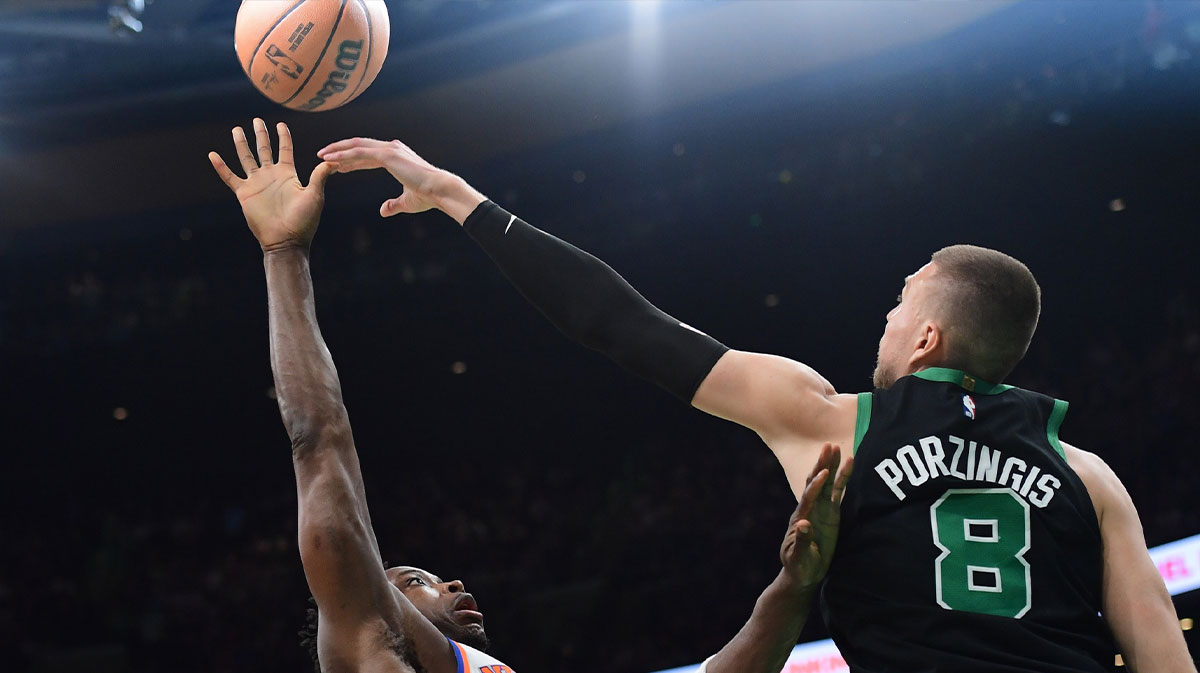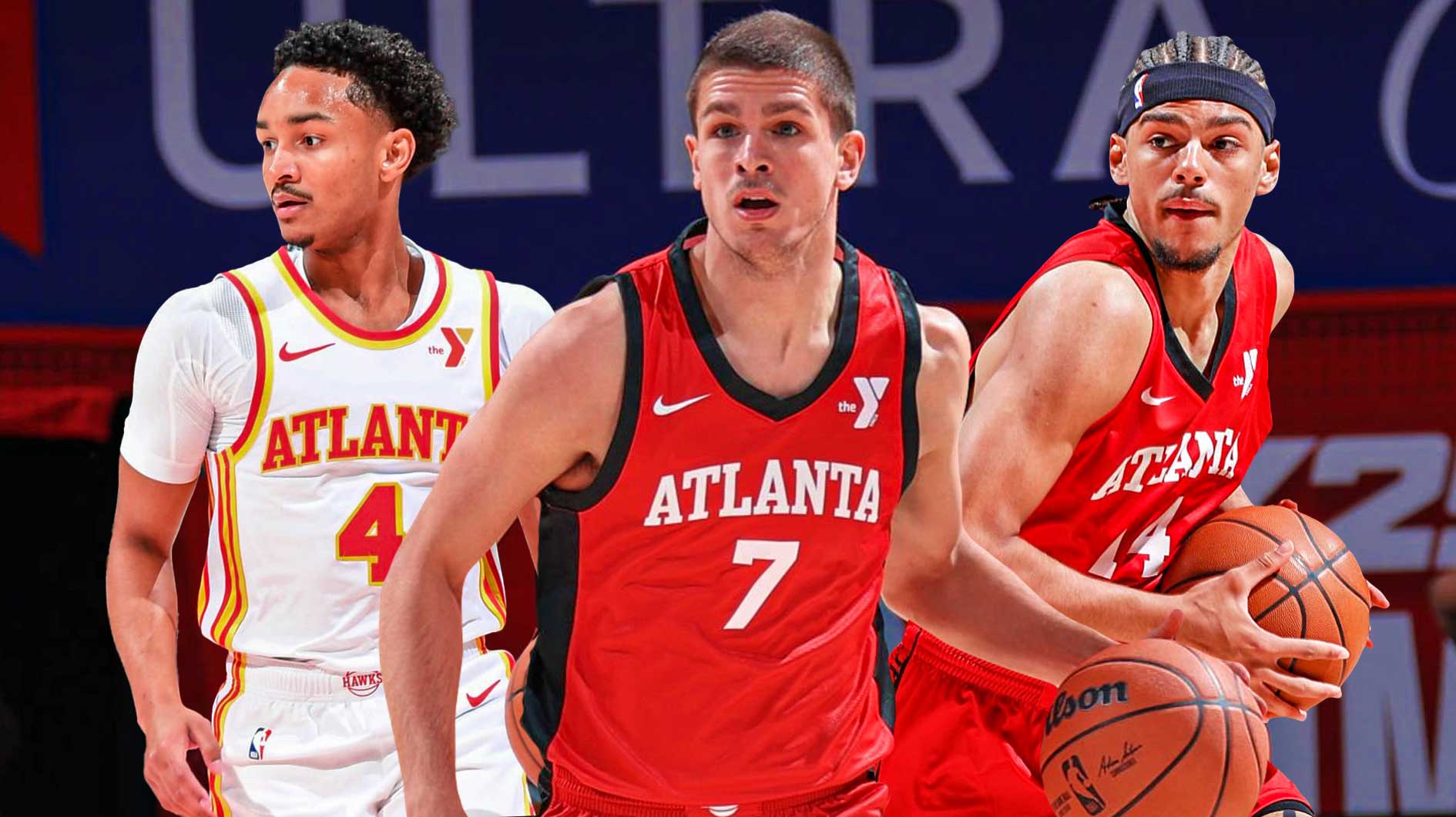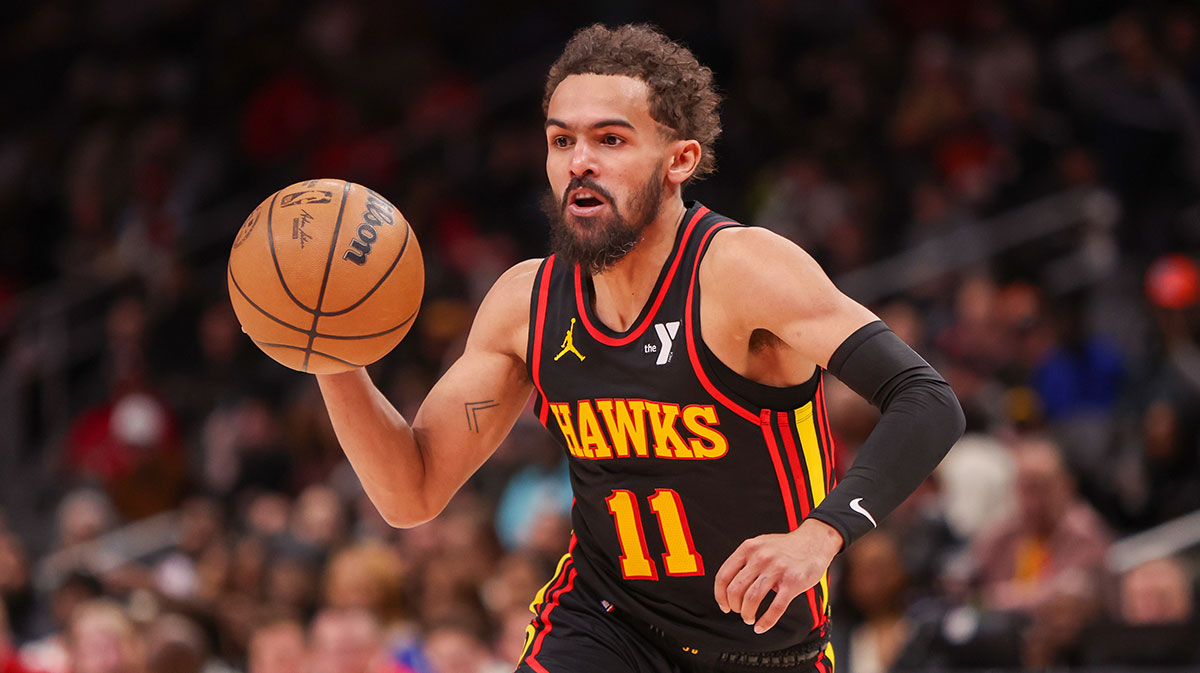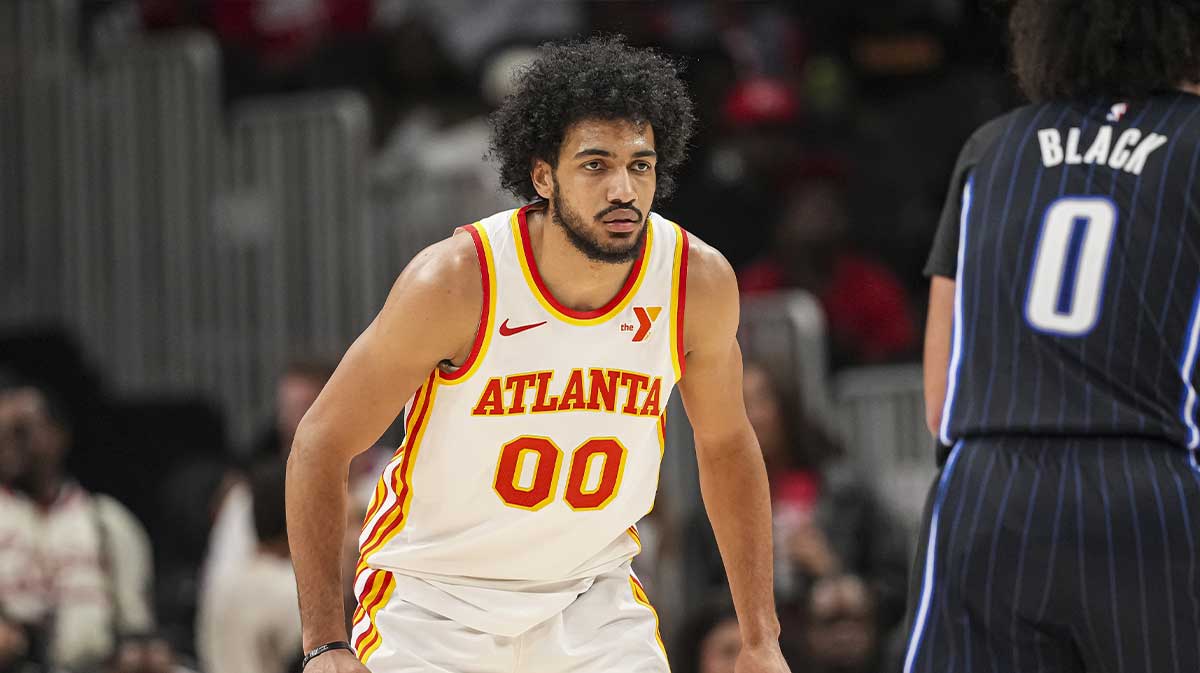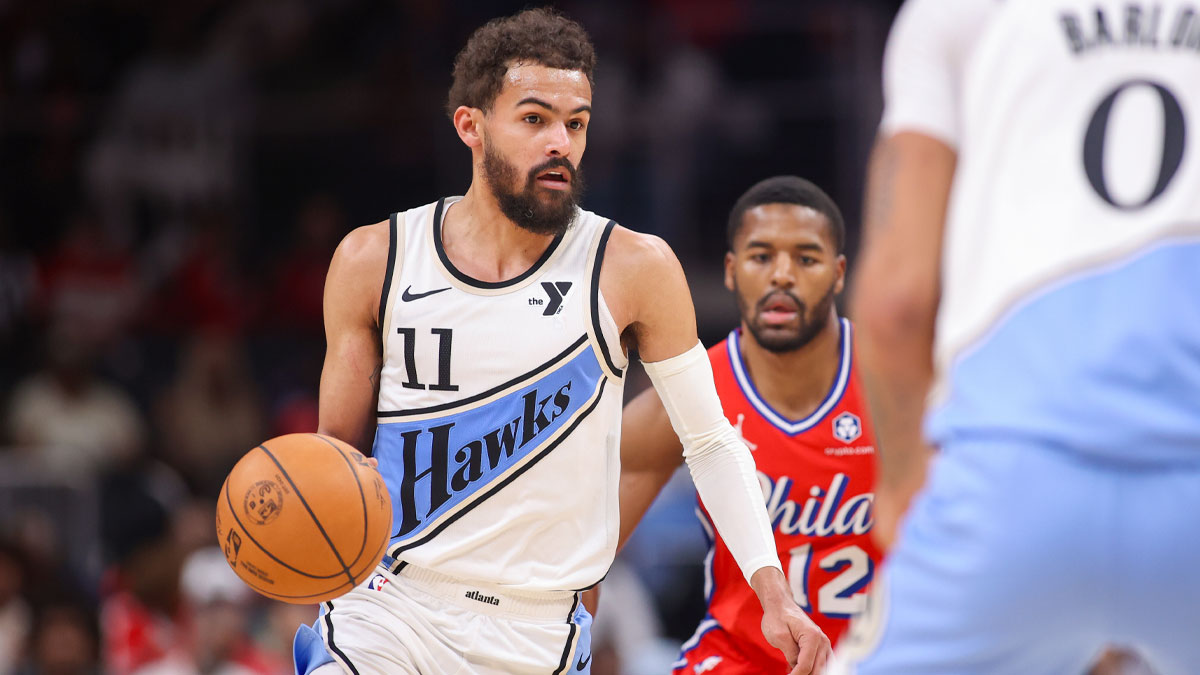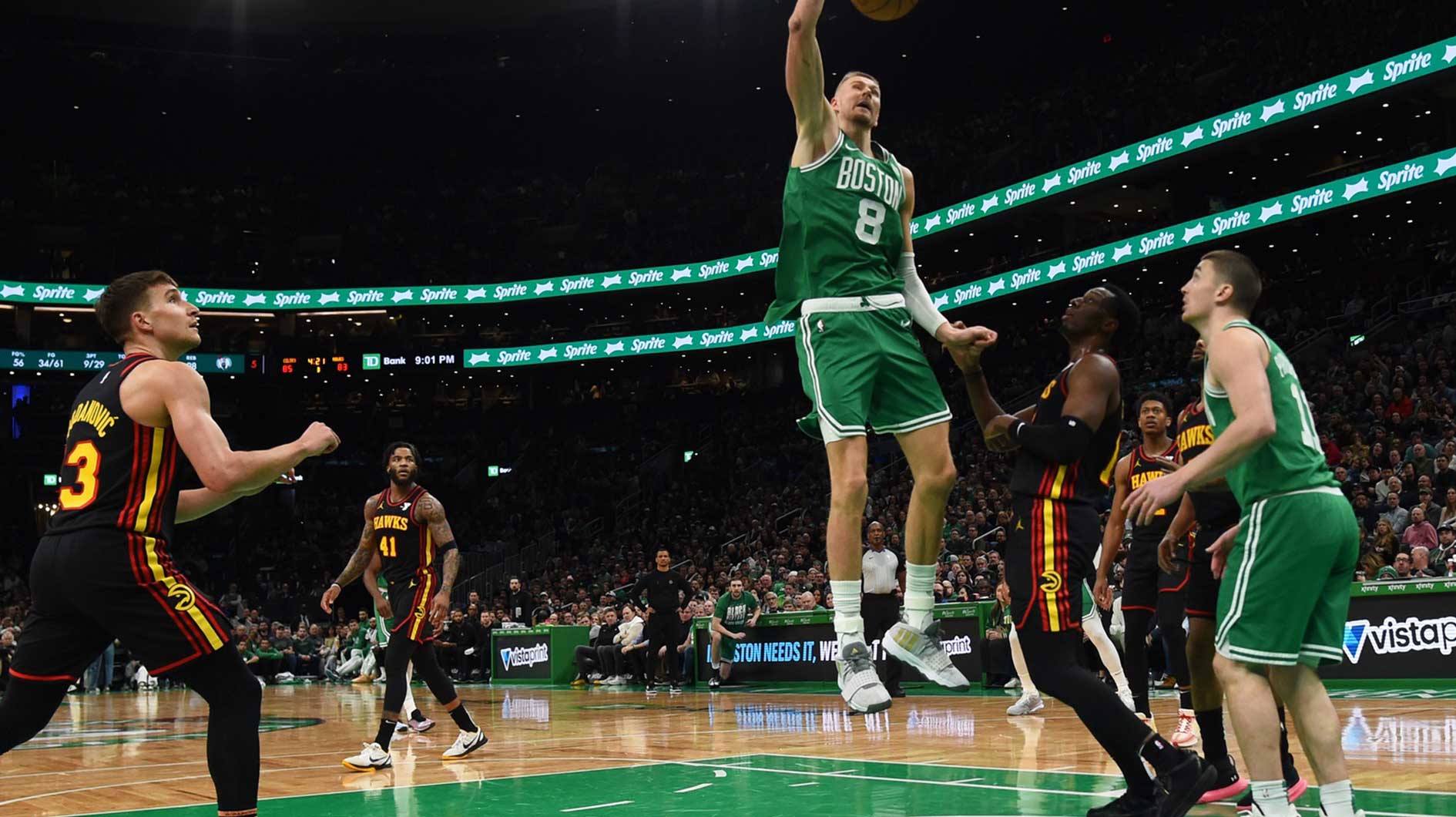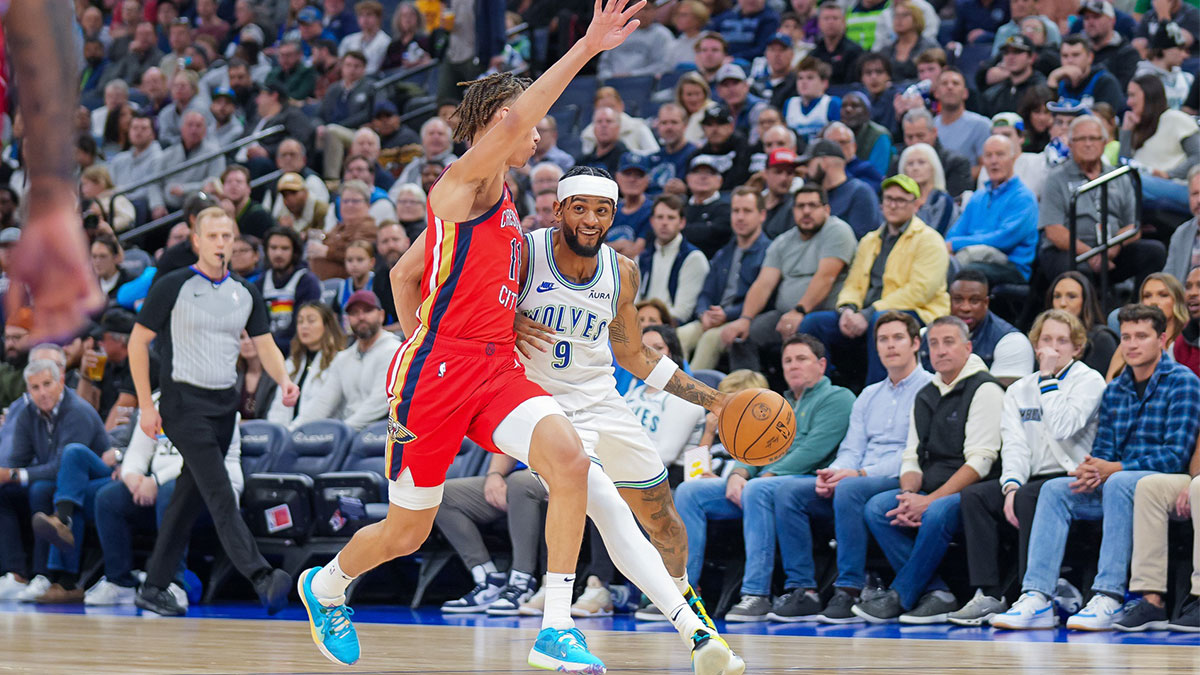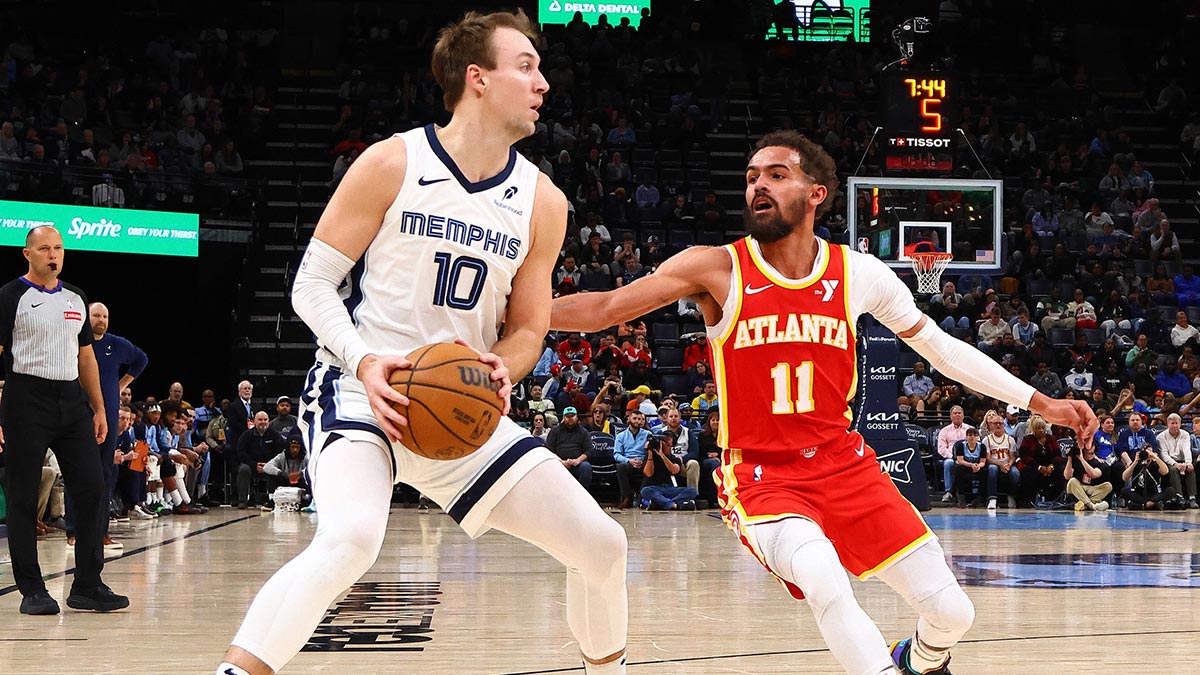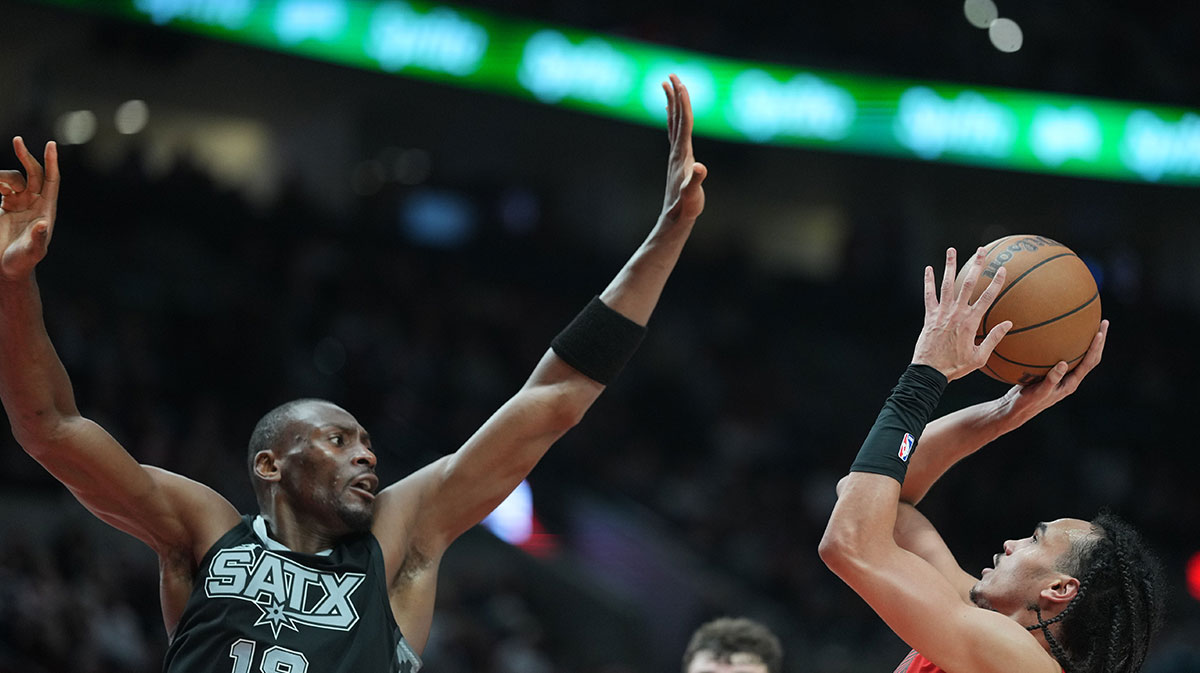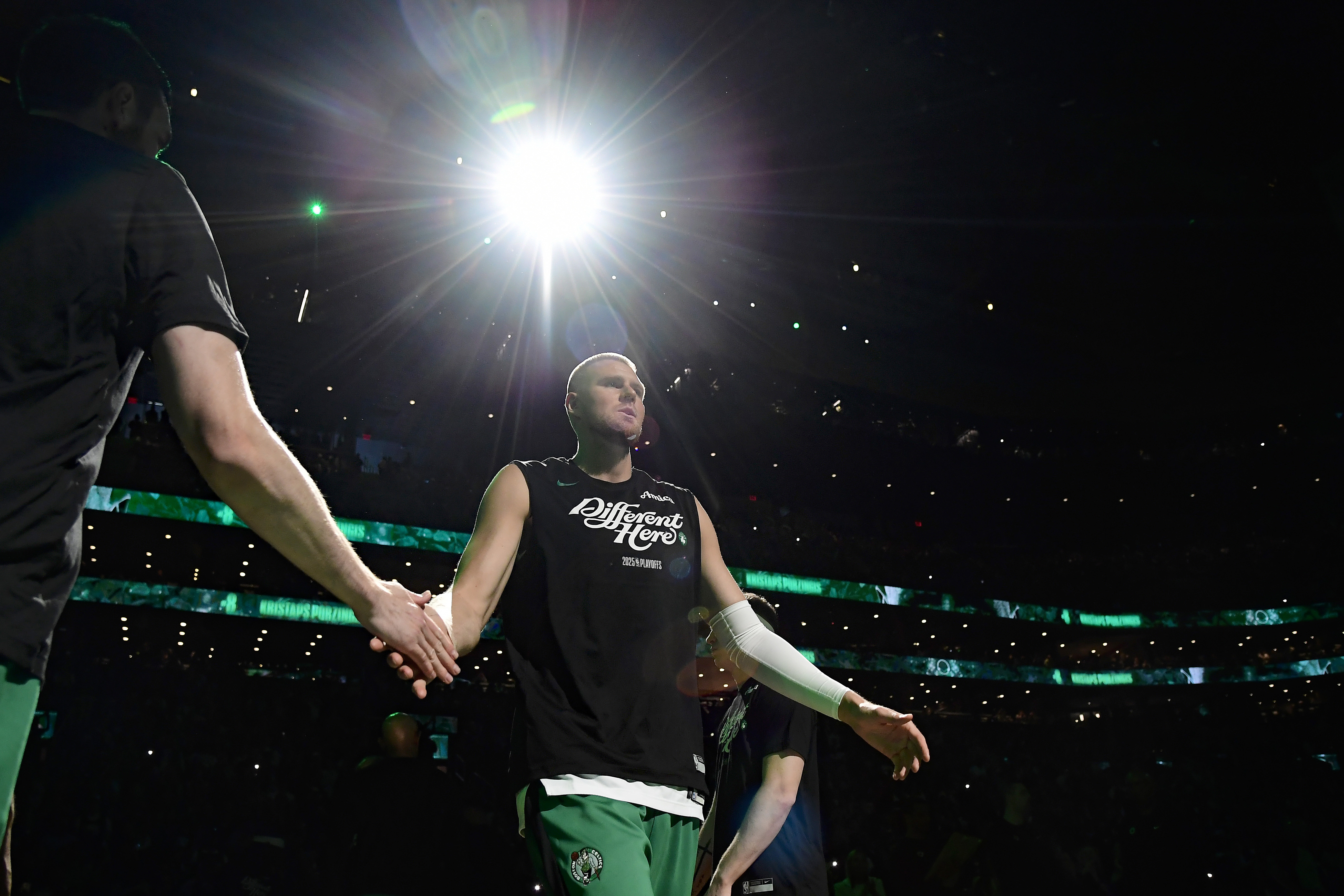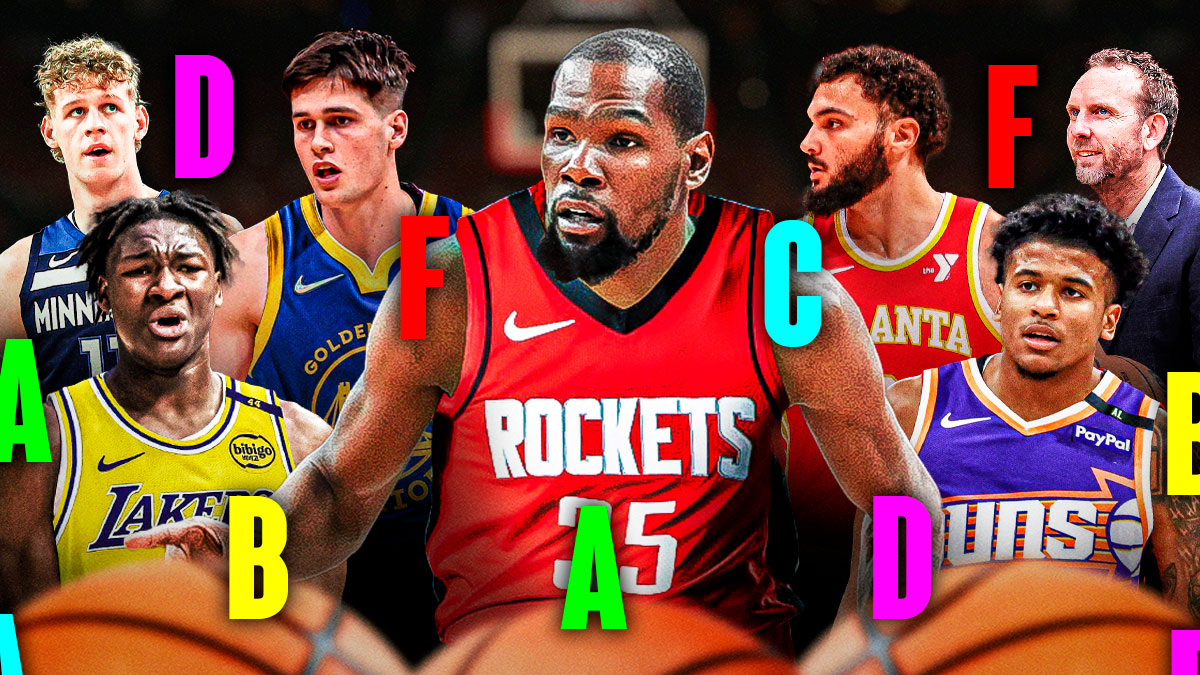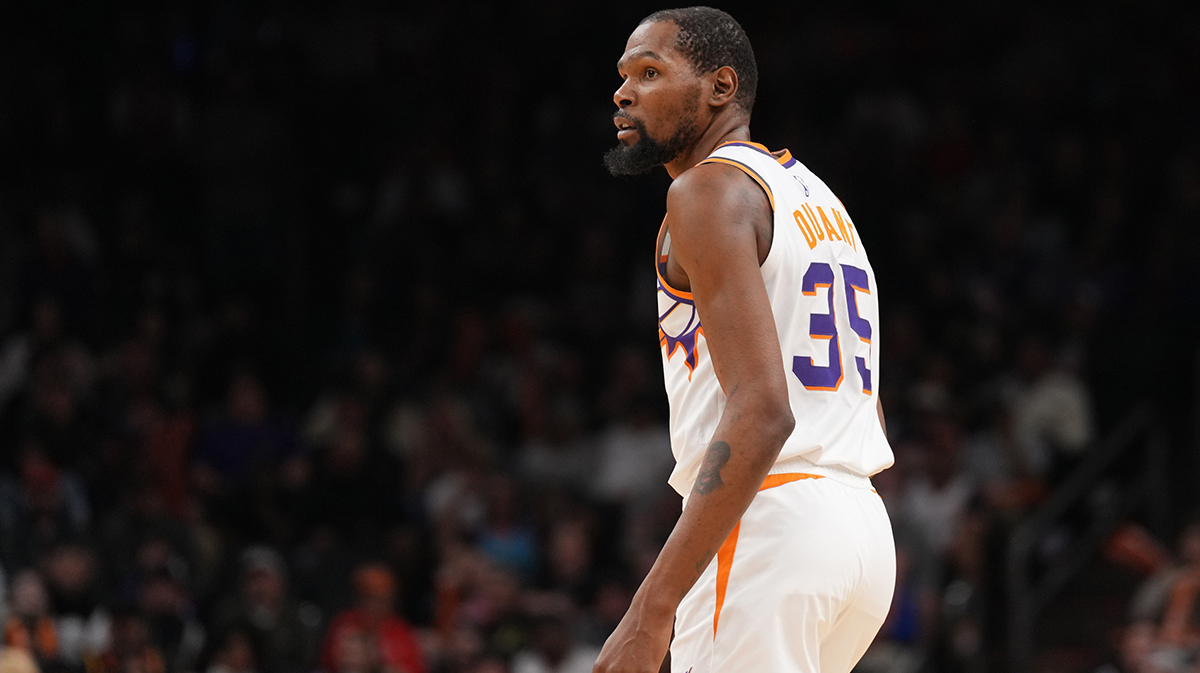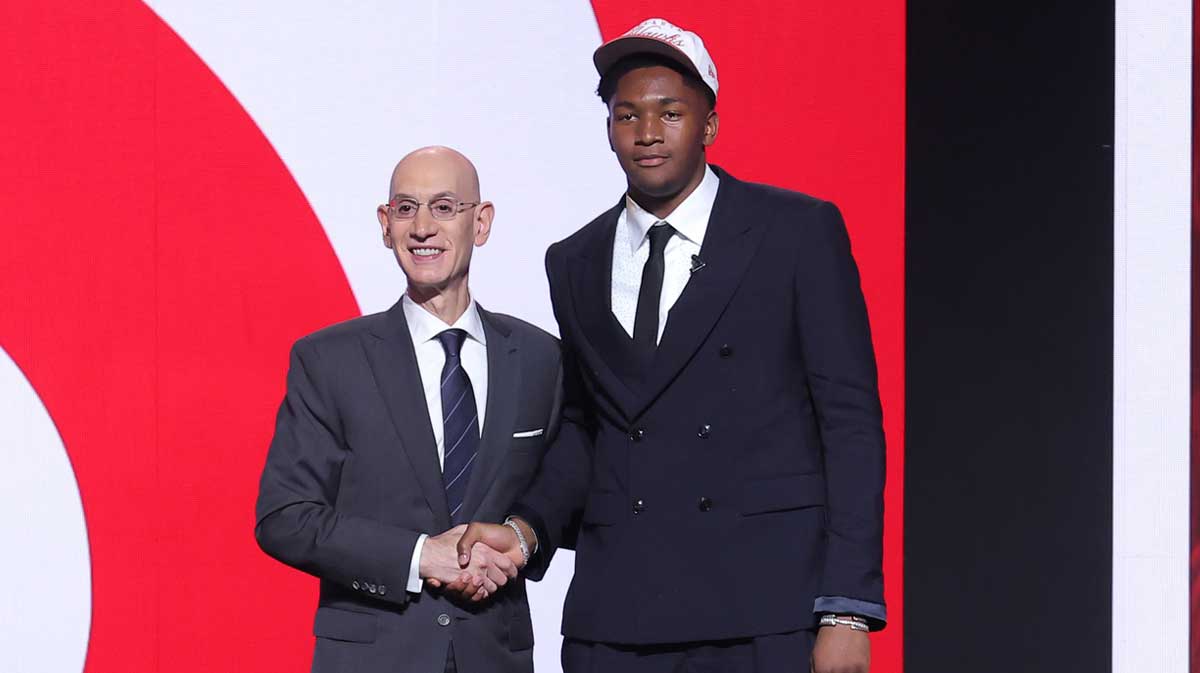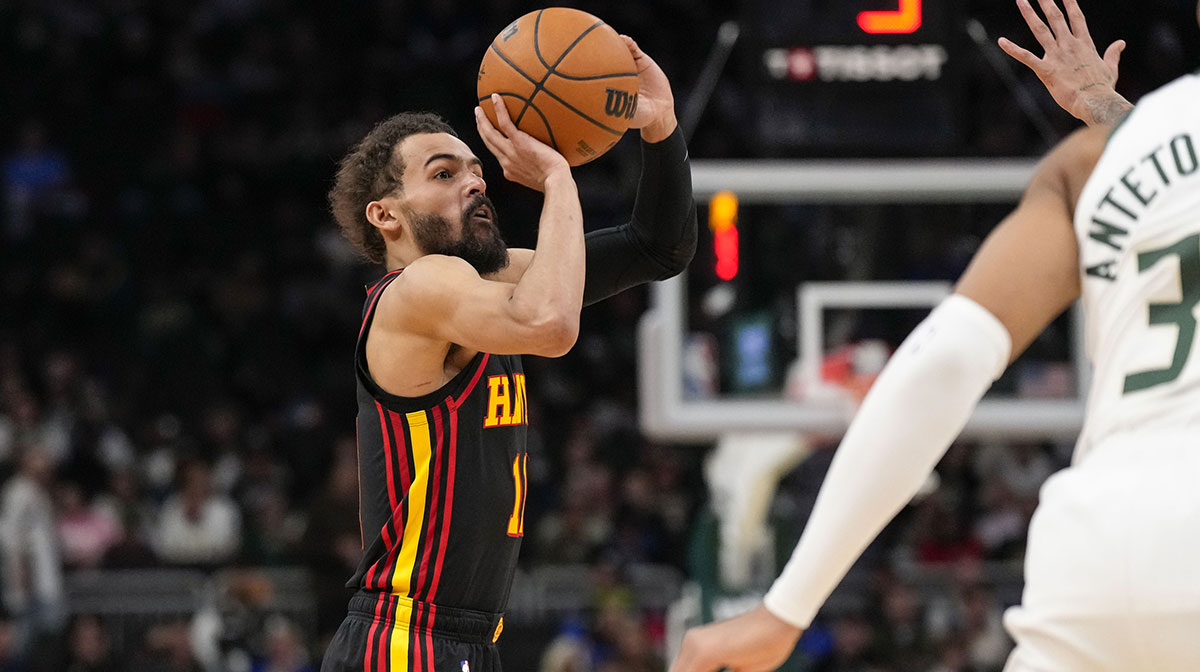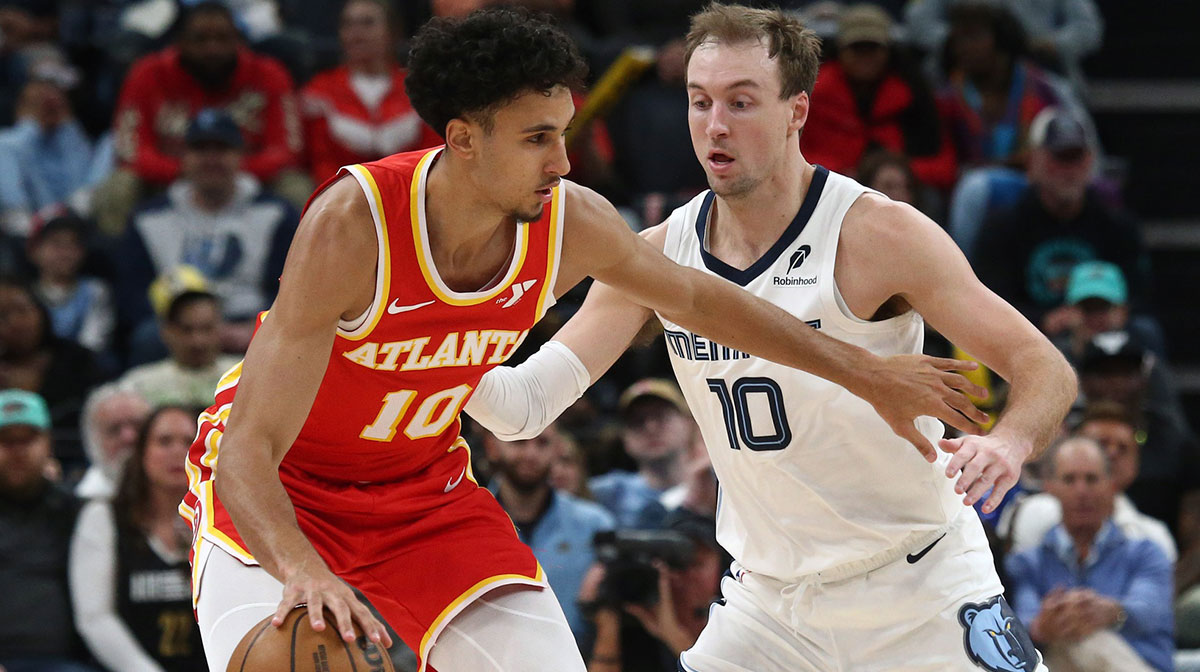Trae Young was supposed to make a jump in his second year in the league. After a strong rookie season, Young was expected to continue to grow and lead a young Atlanta Hawks team, even if they only get to 30 wins or so. But after just a few games, it's clear that Young is more confident and poised than he's ever been. And who really know what the ceiling is for these Hawks?
Through the first three games, Young is averaging 34 points a game, which is second in the NBA only to Kyrie Irving. And he's doing it while shooting a scorching 51.5% from the field and 52% from three. While it's only a small sample size, and Young will come back down to earth eventually, he's visibly more comfortable and confident with his play and his teammates.
The Trae Young-John Collins pick-and-roll has been deadly, and we could spend a whole article talking just about that one play. So we won't touch that one in this breakdown. Let's look at a few other plays from Trae Young's first few games, and analyze what's made him so unstoppable on the court.
We'll start with a play the Hawks ran consistently in their season opener against the Detroit Pistons:
https://streamable.com/glysg
The play started with a “throw and go handoff” with Trae Young and rookie center Bruno Fernando. Young took the handoff, and the play flowed into a pick-and-roll. Jabari Parker came across the court to set the screen, which got Young's defender, Bruce Brown, a step behind.
With Brown chasing over the top of the screen, Markieff Morris–instead of being in drop coverage to contain–completely turned around to chase after a rolling Jabari Parker. Seeing Morris' head turned, Young made a sweet bounce pass on the money to Parker, who got the dunk.
A little while later in the first quarter, the Hawks ran the exact same play:
https://streamable.com/1ws72
But now the roles were flipped. Jabari Parker was the one involved in the handoff, and Bruno Fernando came up for the pick-and-roll. Andre Drummond, Fernando's defender, was in drop coverage–trying to deter the pass to the roll man while containing Young's drive at the same time.
But a deadly three-point shooter will make a big in drop coverage pay every time (see Stephen Curry). With Bruce Brown once again hung up for a second on the screen, Young got a wide open look from downtown. And for a shooter like Trae Young, any kind of daylight would be enough to nail the three.
On the very next possession, the Hawks ran the exact same play for Young:
https://streamable.com/m077v
On this play, they're back to their original roles from the first clip. Bruno Fernando was there for the handoff, and Jabari Parker came up for the pick-and-roll. The Pistons, once again, were in drop coverage. Drop coverage has become one of the most common defenses of pick-and-rolls in the NBA. The goal would be to entice the offensive player to take a mid-range shot, with the guard's defender pressuring from behind to discourage the three, and the big dropping low to discourage the layup.
On the play above, Thon Maker was the dropping big. Bruce Brown was hung up on the screen and a step behind Young. Maker kept backing up, ready to go back to Parker should Young make the pocket pass, or to contest the Trae Young layup.
However, while Young rarely takes mid-range shots, he's adept at making running floaters, and he pulled one out of his bag of tricks here. With some space and Maker retreating, it's an easy floater for Young, and a prime demonstration of the many ways he can torture defenses.
With the Hawks seeing so much success off this play, they go back to it again on their very next possession:
https://streamable.com/lo1jx
Same deal–handoff with Fernando which flowed into a pick-and-roll with Parker. But this time, the Pistons had seen enough of Trae Young beating them, and decided to trap. Both Bruce Brown and Thon Maker converged on Young coming off of the screen. Young, though, had a chance to show off his passing abilities, and dropped a bounce pass to the rolling Parker. With Maker out of the lane, Luke Kennard, who was guarding Vince Carter in the weak side corner, should have bumped down to take the roll man. But he was far too late. The result was an easy dunk for Parker.
Last season, the Hawks often ran a double staggered screen for Young to showcase his shooting and playmaking. In the play, two bigs will set staggered screens at the top of the arc for Young, and one big will roll and one will pop. Young then has the option to pull up for a quick three, drive to the rim if his defender is behind him, or pass it either to the roll man or the big on the perimeter.
They've run it a few times early in this new season as well:
https://streamable.com/8jsrk
Bruno Fernando and Jabari Parker came up to set a double staggered screen for Young. Langston Galloway, now defending Trae, went under the first screen. Here's what separates Trae Young from most all other guards. Seeing he had some daylight, Young just launched it after that first screen and didn't even use the second one.
If you look at where his feet were when he shot, both feet were within the blue Pistons logo at half-court. Only Young and Steph Curry would probably have the boldness, and the green light, to take such a shot. Galloway paid for going under the screen instead of fighting over, and Young nailed it.
Knowing that the Hawks use numerous on-ball screens for Young, defenders will often start to get into position to fight over the screen before the screen is even set. It's a smart move, and a lot of smart NBA defenders use their footwork to get in position for the screen. But Trae is always reading his defender, and he's got a nasty crossover that can punish a defender for turning his hips or moving his feet too early.
Late in the Pistons game, John Collins relayed the play call from coach Lloyd Pierce of a double screen for Young. You can see Collins as he looked back to the bench, then signaled Jabari Parker to come up for the double screen:
https://streamable.com/o4li6
Young started to make a move to use the screens. But a quick crossover left Galloway in his rear as Young finished through contact for the and-one. The two screens were probably a little too close together to begin with, which may have been what led Young to go with the crossover. Either way, it's a killer move.
Young's decision to go with the crossover instead of using the double drag was again on display in this play against the Orlando Magic:
https://streamable.com/uzcsl
With the double drag screens in place, Magic defender D.J. Augstin got in position to go around Alex Len's first screen. Young caught him cheating too early, and hit him with the crossover. Because of Augstin's position, Young had enough space to just let it fly, and an open triple for Trae Young is always a good shot.
Young's crossover move just complements his playmaking abilities so well. Opposing defenders know that off of an on-ball screen, Young is an excellent playmaker, and can get going downhill, deliver a nifty pass to the roll man, or pull up for three. So defenders, as in the clip above, will start to get in position to fight around the screen, or even try to force Young away from the screen.
That's where the crossover comes in, and this last play we'll look at–against the Philadelphia 76ers–is an example of Young rejecting a screen and pulling out a nasty crossover:
https://streamable.com/r8y8e
Josh Richardson, who's a very good defender, got completely turned around. Richardson started to go in the direction of the Alex Len screen and was smartly preparing to fight over it. But Young crossed him up instead and had a wide open look from three as a result, albeit a few steps behind the arc.
Young's playmaking has been superb in the first few games of the season. He's making the right choice of either pulling up for an open three, no matter how deep, or making plays with his vision and passing. He's the clear leader of an exciting Hawks squad, and if they want to make plans for the playoffs, they'll need Young playing at an All-Star level.
Deemed by many as “the next Steph Curry,” Trae Young is starting to live up to the hype.

